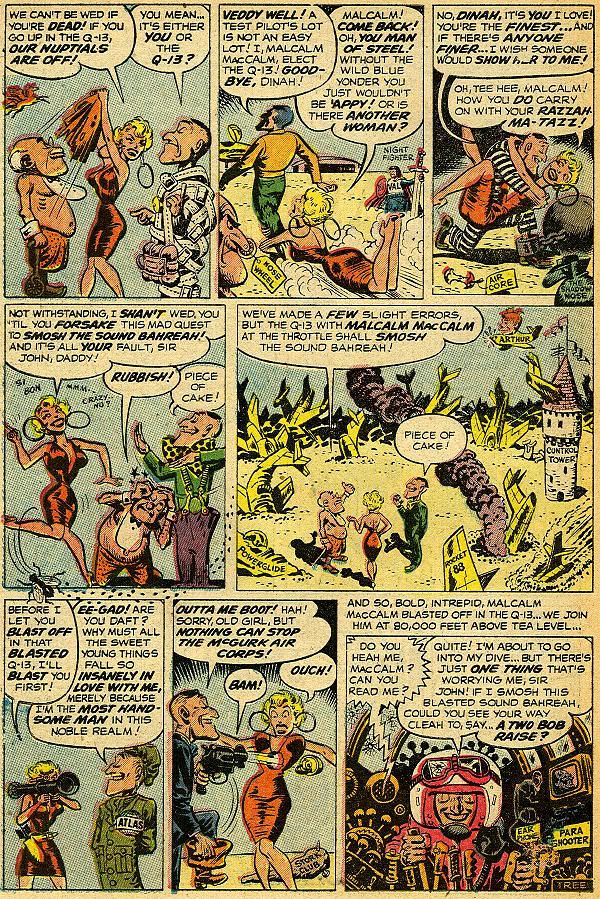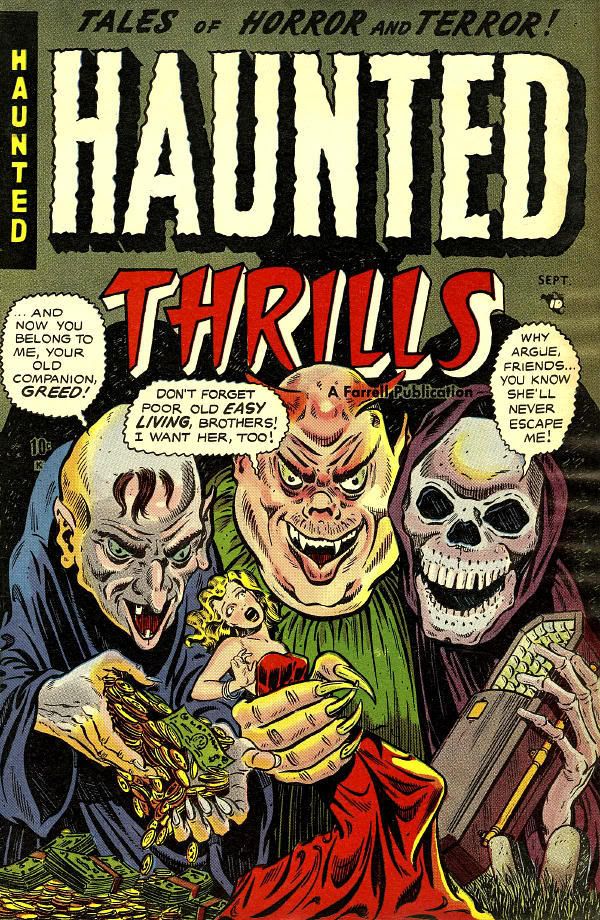
Number 183
Imitation Madness
In my opinion the best story in Mad comics not done by one of the Big Three, Wood, Davis and Elder, is "Plastic Sam," by Russ Heath in Mad #14. Heath, mostly known for his illustrative approach, was freelancing from his regular gig at Atlas Comics, working for Stan Lee.
I think he really liked the idea of the humor comics, because he approached "Plastic Sam" by tightening up and inking Kurtzman's layout. At Atlas, he did the story I'm posting here, "The Wild Blue Yonderrrr," from Crazy #3, in an ersatz Bill Elder/Wally Wood style, with lots of jokes in each of the panels. I like puns and wordplay so I enjoy them, although overall the story is typical Mad imitation; without Kurtzman it's mostly nonsense, rather than satire.
You've got to give companies that went after Mad's popularity credit for trying. Try is all they could do. None of them succeeded, which is why they're obscure and Kurtzman's Mad is still revered.
Heath, who was born in 1926, had a great career at Atlas, turning out Westerns like Kid Colt, Outlaw. He also created some memorable science fiction and horror stories. From there Heath went to DC, where he made his mark in war comics, Sea Devils, et al. All-in-all, a remarkable career by a remarkable artist.
In his humor work Heath liked to insert a self-caricature as part of his signature, as he did in "The Wild Blue Yonderrr."

I've always admired the comic book artists who, when the going was the toughest during the 1950s, still signed their work.
I've been researching what could have inspired "The Wild Blue Yonderrr," and haven't found it. I assume it was a movie, maybe British, about breaking the sound barrier, but can't find references to it in any of my standard resources. If you know please clue me in.





















































